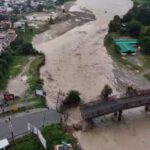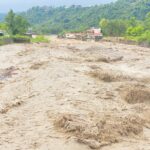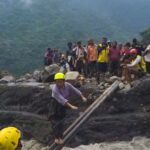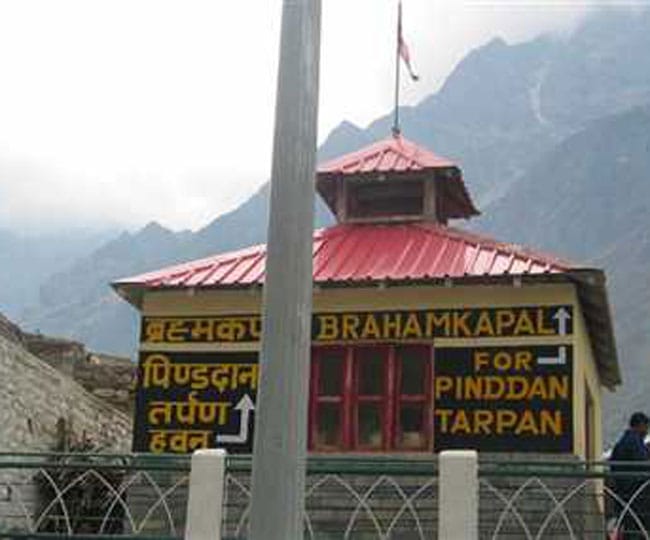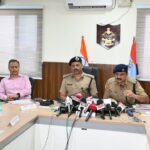Brahmakapal at Badrinath: The Ultimate Site for Ancestral Rites & Salvation
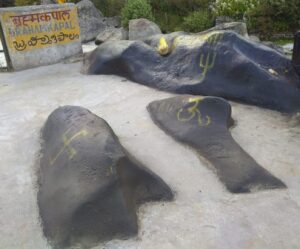
Dehradun, September 7, 2025: At Badrinath Dham, there is a place where performing ‘tarpan’ (rituals to offer water to ancestors) and ‘pind-daan’ (offering rice balls to ancestors) is believed to liberate the souls of ancestors from the cycle of birth and death. It’s also said to free their descendants from ‘Pitra Dosha’ (ancestral curse). It is believed that Lord Shiva was freed from the sin of ‘Brahmahatya’ (killing a Brahmin) at this very spot.
According to the Puranas, the significance of Brahmakapal—located about 200 meters from the Badrinath Dham temple on the banks of the Alaknanda River—is equivalent to that of the Gaya pilgrimage site in Bihar for performing ancestral rites. In the Yajnavalkya Smriti, Sage Yajnavalkya writes: “Aayuh prajam, dhanam vidyam swargam, moksham sukhani cha. Prayachchhanti tatha rajyam pitarah shraaddha tarpitah.” This means: “Ancestors, pleased by ‘shraaddha’ (rites for the deceased), bestow longevity, progeny, wealth, knowledge, heaven, salvation, kingdom, and all other forms of happiness.”
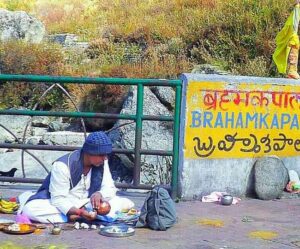
People from Around the World Come to Brahmakapal for ‘Tarpan’
In the Sanatana tradition, ‘Pitru Paksha’ (fortnight of ancestors) is celebrated every year from the full moon of the Hindu month of Bhadrapada to the new moon of Ashwin. During this period, thousands of people come to Brahmakapal to perform ‘tarpan’ and ‘pind-daan’ for their ancestors.
The story of Brahmakapal is linked to Lord Shiva and Lord Brahma. According to legend, when Lord Shiva, in a fit of rage, cut off Lord Brahma’s fifth head, it got stuck to his trident. Worried, Goddess Parvati told Lord Shiva that he had committed the sin of ‘Brahmahatya’ and advised him to perform ‘pind-daan’ at Gaya to be freed from it. Lord Shiva did so, but the sin was not absolved. He then performed the rites in Kashi and Haridwar as well, but still, he could not get rid of the sin.
Freedom from the Sin of ‘Brahmahatya’ Was Found Here
When Goddess Parvati told this to Narada, he advised Lord Shiva to perform ‘pind-daan’ at Badrinath Dham. Lord Shiva, accompanied by Goddess Parvati, went to Badrinath. After he performed the ‘pind-daan’ rites on the banks of the Alaknanda River, Lord Brahma’s head, which was stuck to the trident, fell to the ground and turned into a stone.
According to priest Pandit Mohit Sati, after the ritual was successfully completed, Lord Shiva and Goddess Parvati declared that any person who performs ‘tarpan’ and ‘pind-daan’ for their ancestors at this spot would not need to do so anywhere else. The ‘pind’ (rice balls) used for the rituals at Brahmakapal are made from the cooked rice offered to Lord Badri Narayan as ‘bhog.’
‘Pind-Daan’ at Brahmakapal Is Considered the Most Superior
The ‘Kedar Khand’ section of the Skanda Purana states that while performing ‘pind-daan’ in Gaya (Bihar), Pushkar (Rajasthan), Haridwar (Uttarakhand), Prayagraj, and Kashi (Uttar Pradesh) is also beneficial, the rites performed at Brahmakapal, located in the divine land of Badrinath Dham, are considered the most superior of all.
The Shrimad Bhagwat Mahapurana mentions that after killing their kin in the Mahabharata war, the Pandavas were afflicted with the sin of ‘gotra-hatya’ (killing their own clan). To attain salvation from this sin, they performed ‘tarpan’ for their ancestors at Brahmakapal before embarking on their ‘Swargarohini Yatra’ (journey to heaven). Only then were they freed from the sin of killing their lineage.

